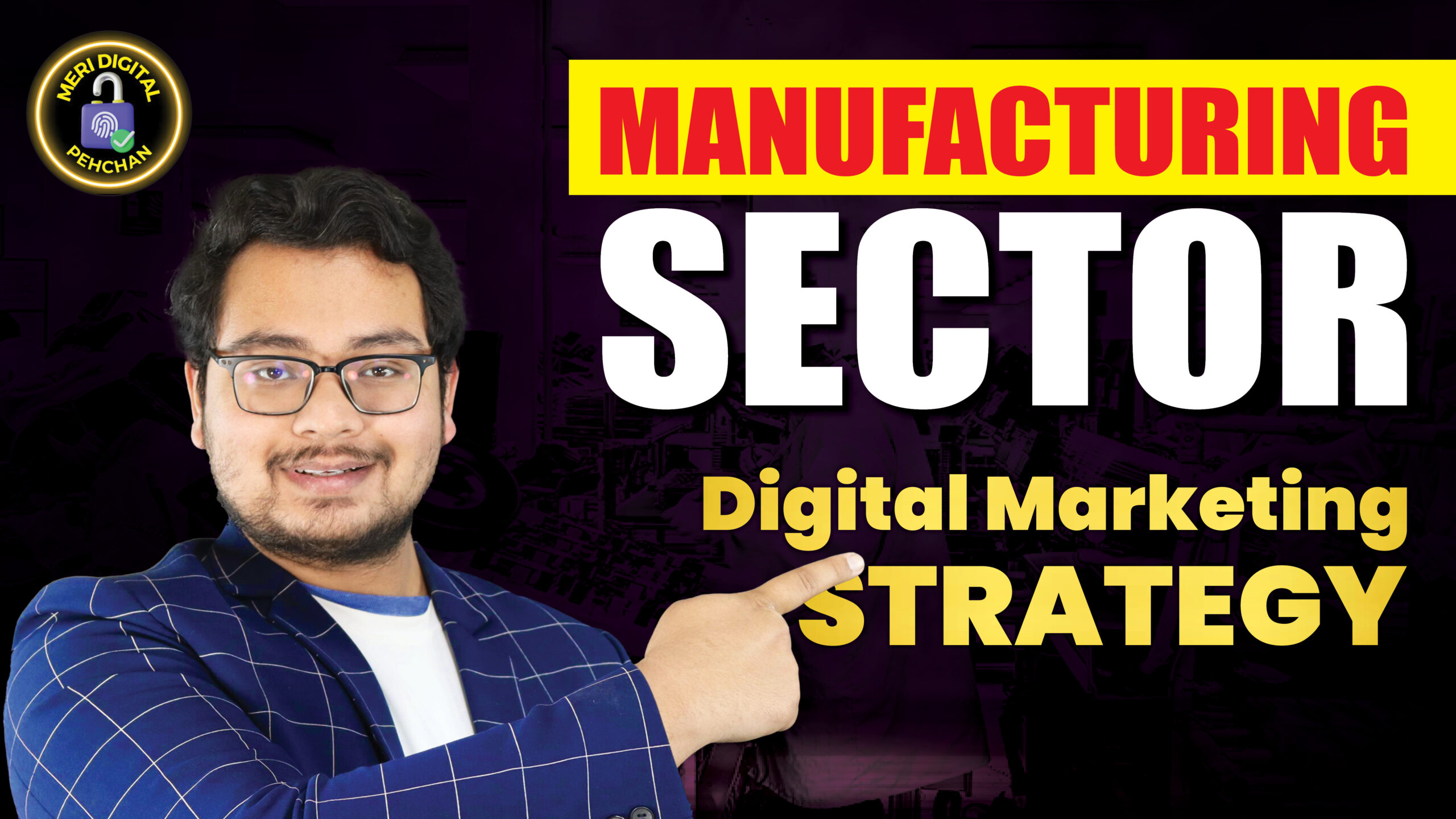Did you know that in India, the e-commerce industry is projected to reach a staggering $200 billion by 2027?
In this comprehensive guide, we will delve into the world of digital marketing strategy for retail businesses and e-commerce stores. As the online marketplace continues to evolve, having an effective digital marketing strategy is essential for success. We will explore various tactics and techniques that can help you drive growth, engage customers, and stand out in this competitive landscape.
Key Takeaways:
- Understand the current retail digital marketing landscape and its challenges and opportunities.
- Define your target audience to optimize retail store branding and e-commerce conversion.
- Set clear and measurable marketing objectives aligned with your overall business goals.
- Create a compelling brand story that resonates with your target audience and enhances customer loyalty.
- Implement a comprehensive SEO strategy to improve search engine rankings and drive organic traffic.
Understanding the Retail Digital Marketing Landscape
In today’s highly competitive online marketplace, digital marketing plays a crucial role in the success of retail businesses and e-commerce stores. Understanding the retail digital marketing landscape is essential for effectively reaching and engaging with your target audience. In this section, we will provide an overview of the current state of online marketing for retail and the importance of digital advertising for e-commerce.
The Challenges and Opportunities
The retail digital marketing landscape is constantly evolving, presenting both challenges and opportunities for businesses. On one hand, the rapid growth of e-commerce has intensified competition, making it harder for retailers to stand out. On the other hand, it has opened up new avenues for reaching customers and building brand awareness.
“The retail industry faces fierce competition in the digital realm. To succeed, retailers need to adopt innovative strategies that effectively promote their products and services.”
As e-commerce continues to gain traction, it is crucial for retailers to adapt their marketing strategies accordingly. This means embracing digital advertising and harnessing the power of online marketing channels to maximize visibility and drive targeted traffic to their online stores.
The Importance of a Solid Digital Marketing Strategy
A solid digital marketing strategy is the foundation of success for any retail business or e-commerce store in today’s digital age. It allows businesses to effectively connect with their target audience, build brand loyalty, and drive conversions. By understanding the various online marketing channels and knowing how to leverage them, retailers can create a comprehensive strategy that delivers tangible results.
Exploring Online Marketing Channels
There are numerous online marketing channels available to retailers, each with its strengths and opportunities. Some of the key channels to consider include:
- Search Engine Optimization (SEO)
- Pay-per-Click (PPC) advertising
- Social media marketing
- Email marketing
- Influencer marketing
- Affiliate marketing
By strategically integrating these channels into their digital marketing strategies, retailers can reach their target audience at various touchpoints and maximize their online visibility.
Now, let’s take a closer look at each of these channels and explore how they can be effectively utilized in a retail digital marketing strategy.
Defining Your Target Audience
Defining your target audience is a critical step in developing a successful digital marketing strategy for your retail store or e-commerce business. By understanding and identifying your target audience, you can tailor your marketing efforts to effectively reach and engage the right customers. In this section, we will guide you through the process of defining your target audience, with a specific focus on retail store branding and e-commerce conversion optimization.
Understanding your target audience involves collecting and analyzing key demographic, psychographic, and behavioral data. By gaining insights into their preferences, interests, and purchasing behaviors, you can create targeted marketing campaigns that resonate with your audience and drive conversions.
To define your target audience, start by conducting in-depth market research. This can include analyzing industry trends, studying your competitors, and surveying your existing customers. By gathering this information, you can identify common characteristics and patterns that will help you create detailed buyer personas.
Remember, retail store branding is essential for establishing a strong identity and attracting your target audience. Your brand messaging, visual elements, and customer experience should all align with the needs and desires of your target customers.
Once you have defined your target audience, it’s time to optimize your e-commerce store or retail store branding to effectively convert visitors into customers. Consider the following tactics:
- Create a user-friendly and visually appealing website design that reflects your brand and caters to your target audience’s preferences.
- Optimize your website’s navigation and product categorization to make it easy for customers to find what they are looking for.
- Implement persuasive and compelling product descriptions that highlight the benefits and features that appeal to your target audience.
- Utilize customer reviews and testimonials to build trust and credibility with your target audience.
- Implement effective call-to-action buttons and optimize your checkout process to minimize cart abandonment.
By focusing on retail store branding and e-commerce conversion optimization, you can attract and convert the right customers, leading to increased sales and business growth.
Key Steps to Define Your Target Audience
| Step | Description |
|---|---|
| Conduct Market Research | Analyze industry trends, study competitors, and survey existing customers to gather data. |
| Create Buyer Personas | Use the data collected to create detailed profiles of your ideal customers. |
| Align Branding with Audience | Ensure your retail store branding reflects the needs and desires of your target audience. |
| Optimize E-commerce Store | Create a user-friendly website design and optimize the checkout process. |
Setting Clear Marketing Objectives
One of the key factors in developing a successful digital marketing strategy for retail businesses and e-commerce stores is setting clear and measurable marketing objectives. By defining your goals and aligning them with your overall business objectives, you can effectively drive results and maximize the impact of your digital marketing efforts.
When setting marketing objectives, it’s essential to consider your target audience, competition, and market trends. By understanding your target audience’s needs and preferences, you can tailor your digital marketing campaigns to effectively reach and engage them. Additionally, analyzing your competition and staying up-to-date with market trends can help you identify opportunities and differentiate your brand in the crowded online marketplace.
Here are some key steps to follow when setting clear marketing objectives:
- Define Your Key Performance Indicators (KPIs): Determine which metrics are most important for measuring the success of your digital marketing campaigns. These could include metrics like website traffic, conversion rates, customer acquisition cost, or return on investment (ROI). By identifying specific KPIs, you can track and evaluate the performance of your marketing efforts.
- Set Specific and Measurable Goals: Clearly define what you aim to achieve with your digital marketing strategy. Whether it’s increasing website traffic, boosting online sales, or improving brand awareness, setting specific and measurable goals allows you to track progress and make data-driven decisions.
- Align Marketing Objectives with Business Objectives: Your marketing objectives should support and align with your overall business goals. For example, if your business objective is to increase revenue by 20%, your marketing objective could be to boost online sales by a certain percentage. This alignment ensures that your digital marketing efforts contribute directly to the success of your business.
- Set Realistic and Time-Bound Targets: Ensure that your marketing objectives are attainable and realistic based on your available resources and market conditions. Additionally, setting a timeframe for achieving your objectives creates a sense of urgency and helps you stay focused on your goals.
By setting clear marketing objectives, you provide your digital marketing team with a clear direction and purpose, enabling them to develop targeted and effective campaigns. Furthermore, having measurable objectives allows you to track progress, identify areas for improvement, and optimize your digital marketing strategy for better results.
Next, we will explore how crafting a compelling brand story can help you connect with your audience and drive customer loyalty.

Crafting a Compelling Brand Story
A strong brand story has the power to captivate your audience and set your retail business or e-commerce store apart from the competition. It allows you to create a personal connection with your customers, building trust and loyalty that drives conversions. In this section, we will explore the art of crafting a compelling brand story that resonates with your target audience and optimizes e-commerce conversion.
Connecting with Your Audience
When crafting your brand story, it’s essential to understand your target audience and their needs. Research their preferences, lifestyle choices, and motivations to create a narrative that aligns with their values and desires.
The key to a successful brand story lies in empathizing with your audience. By understanding their pain points and aspirations, you can create a story that emotionally resonates with them. This emotional connection will not only generate interest in your brand but also foster long-term loyalty.
Defining Your Unique Value Proposition
Your brand story should highlight what sets you apart from your competitors. Identify your unique value proposition and make it the central theme of your narrative. Showcase how you solve your customers’ problems or fulfill their desires in a way that no one else can.
Your unique value proposition is the foundation of your brand story. It should communicate the benefits and advantages customers can expect when they choose your retail store or e-commerce platform.
Compelling Visual Branding
In addition to your brand story, visual branding plays a vital role in creating a memorable impression. Consistent use of colors, typography, and imagery that aligns with your brand story contributes to a cohesive and impactful visual identity.
Visual elements such as logos, website design, and product packaging help reinforce your brand story. They serve as visual cues that evoke emotions and memories associated with your brand, fostering a strong connection with your target audience.
Showcasing Social Proof
Social proof, such as customer testimonials, reviews, and endorsements, enhances the credibility of your brand story. Incorporating social proof in your narrative validates the experiences of your satisfied customers and builds trust with potential buyers.
Highlight the positive experiences of your customers to demonstrate the real-world impact of your retail store or e-commerce offerings. Including authentic testimonials and reviews can convince potential customers that your brand is trustworthy, encouraging them to make a purchase.
Elements of a Compelling Brand Story
| Element | Description |
|---|---|
| Target Audience | Understand your audience’s needs, preferences, and motivations to create a story that resonates with them. |
| Unique Value Proposition | Highlight what sets your brand apart from competitors and how you fulfill your customers’ desires. |
| Visual Branding | Consistent use of colors, typography, and imagery that aligns with your brand story. |
| Social Proof | Incorporate testimonials, reviews, and endorsements to build trust with potential customers. |
By incorporating these elements into your brand story, you can create a compelling narrative that resonates with your target audience and drives e-commerce conversion. Remember, a well-crafted brand story is a powerful tool for building a strong and loyal customer base.
Building a Comprehensive SEO Strategy
A well-optimized website is essential for visibility and organic traffic. In this section, we will explore various e-commerce SEO tactics and strategies to help improve your website’s search engine rankings and drive targeted traffic to your online store.
The Importance of SEO in E-Commerce
When it comes to running a successful e-commerce business, implementing effective SEO tactics is crucial. SEO, or search engine optimization, focuses on optimizing your website to improve search engine rankings, increase visibility, and attract relevant organic traffic.
“SEO is the foundation of any successful online business. By leveraging strategic SEO tactics, you can ensure that your website is discoverable by your target audience and outrank your competitors in search engine results.” – SEO Expert
Key E-Commerce SEO Tactics
Here are some key e-commerce SEO tactics you should consider implementing:
- Keyword Research: Conduct thorough keyword research to identify relevant and high-ranking keywords that potential customers may use to search for products similar to yours.
- On-Page Optimization: Optimize the on-page elements of your website, including meta tags, headers, URLs, and internal linking structure, to make it search engine-friendly and improve its chances of ranking higher.
- High-Quality Content Creation: Create unique and engaging content that aligns with your target audience’s interests and provides value. Incorporate relevant keywords naturally within the content.
- Optimized Product Descriptions: Craft compelling and SEO-friendly product descriptions that accurately describe your offerings and include relevant keywords.
- Mobile Optimization: Ensure your website is mobile-friendly and responsive, as mobile devices account for a significant portion of online traffic.
- Site Speed Optimization: Improve your website’s loading speed to enhance user experience and reduce bounce rates, as slow-loading sites can negatively impact search engine rankings.
- User Experience (UX) Optimization: Focus on providing seamless navigation, intuitive design, and easy-to-use features to enhance the overall user experience and encourage conversions.
- Link Building: Build high-quality backlinks from reputable websites to improve your website’s authority and credibility in the eyes of search engines.
- Local SEO: Implement local SEO strategies, such as optimizing your Google My Business listing and targeting location-specific keywords, to attract local customers.
By implementing these e-commerce SEO tactics, you can optimize your website for search engines, increase its visibility, attract targeted traffic, and ultimately drive more conversions and revenue for your online store.
E-Commerce SEO Checklist
“`
| Tactics | Description |
|---|---|
| Keyword Research | Conduct thorough keyword research to identify relevant and high-ranking keywords for your e-commerce store. |
| On-Page Optimization | Optimize on-page elements, such as meta tags, headers, URLs, and internal linking structure. |
| High-Quality Content Creation | Create unique and engaging content that incorporates relevant keywords. |
| Optimized Product Descriptions | Write compelling and SEO-friendly product descriptions that accurately depict your offerings. |
| Mobile Optimization | Ensure your website is mobile-friendly and provides a seamless user experience across devices. |
| Site Speed Optimization | Optimize your website’s loading speed to improve user experience and search engine rankings. |
| User Experience (UX) Optimization | Focus on providing a seamless and intuitive user experience to enhance engagement and conversions. |
| Link Building | Acquire high-quality backlinks from reputable websites to boost your website’s authority. |
| Local SEO | Implement local SEO strategies to attract customers in specific geographic locations. |
Leveraging Social Media Marketing
Social media has emerged as a powerful tool for retail businesses and e-commerce stores to connect with their target audience and enhance brand visibility. By leveraging social media effectively, businesses can drive engagement, increase conversions, and optimize their e-commerce strategies.
Social media platforms provide a wealth of opportunities for retail businesses and e-commerce stores to showcase their products, engage with customers, and build brand loyalty. With billions of active users across different platforms, such as Facebook, Twitter, Instagram, and LinkedIn, social media offers a vast pool of potential customers waiting to be tapped into.
When it comes to retail and e-commerce, social media can play a crucial role in driving e-commerce conversions and optimizing online marketing efforts. By implementing effective social media marketing strategies, businesses can create a seamless customer journey that leads to increased sales and customer retention.
Building a Strong Social Media Presence
To leverage social media for retail and e-commerce purposes, it is essential to build a strong social media presence that aligns with your brand and resonates with your target audience. Here are a few key steps to consider:
- Create a social media marketing plan: Identify your goals, target audience, and desired outcomes. Develop a content strategy that caters to your audience’s interests and aligns with your brand’s messaging.
- Choose the right platforms: Understand your target audience’s preferences and select the social media platforms where they are most active. This will enable you to focus your efforts and maximize your reach.
- Create engaging content: Develop high-quality and visually appealing content that captures the attention of your audience. Use a mix of photos, videos, infographics, and blog posts to keep your social media profiles vibrant and captivating.
- Engage with your audience: Respond promptly to comments, messages, and mentions. Encourage discussions, ask questions, and foster a sense of community among your followers.
Optimizing for E-commerce Conversion
Social media can be a valuable driver of e-commerce conversions. Here are some strategies to optimize your social media marketing efforts for increased conversions:
- Include clear calls-to-action (CTAs) in your social media posts: Guide your audience towards the desired action, whether it’s making a purchase, subscribing to a newsletter, or booking a service.
- Offer exclusive promotions and discounts: Encourage your social media followers to take action by providing them with exclusive discounts or limited-time offers. This creates a sense of urgency and incentivizes conversions.
- Optimize your landing pages: Ensure that the landing pages you link to from your social media profiles are optimized for conversions. Streamline the checkout process, highlight key product features, and include customer testimonials to build trust.
- Track and analyze your social media performance: Utilize analytics tools to measure the effectiveness of your social media campaigns. Identify what works and what doesn’t, and make data-driven decisions to optimize your strategies.
By effectively leveraging social media marketing, retail businesses and e-commerce stores can tap into a vast audience, increase brand visibility, and drive e-commerce conversions. Harness the power of social media to propel your online business to new heights.
Implementing Effective Paid Advertising
Paid advertising plays a crucial role in expanding the reach and impact of your digital marketing efforts. By strategically utilizing various paid advertising channels and employing effective marketing strategies, both retail businesses and e-commerce stores in India can significantly enhance their online visibility and drive targeted traffic. In this section, we will explore the different paid advertising options available and discuss how they can be leveraged to maximize your digital advertising ROI.
The Power of Digital Advertising for E-commerce
Digital advertising offers immense potential for e-commerce businesses to connect with their target audience and generate sales. With the right approach, e-commerce stores can effectively reach their potential customers and drive conversions. Here are some key benefits of digital advertising for e-commerce:
- Increased brand visibility: Paid advertising allows you to promote your products and brand across various online channels, ensuring maximum visibility to your target audience.
- Precise targeting: Digital advertising platforms offer advanced targeting options that enable you to reach the right audience based on demographics, online behavior, and interests, ensuring your ads are shown to those most likely to convert.
- Immediate results: Unlike organic strategies, paid advertising can generate immediate results, allowing you to drive traffic and sales to your e-commerce store quickly.
Key Paid Advertising Channels and Strategies
When it comes to implementing effective paid advertising, it’s essential to identify the most suitable channels and strategies for your business. Below, we highlight some popular paid advertising channels:
- Search Engine Advertising: Google Ads and Bing Ads are powerful platforms that allow you to showcase your products and services on search engine result pages. By targeting relevant keywords and optimizing your campaigns, you can drive qualified traffic to your e-commerce store.
- Social Media Advertising: Platforms like Facebook, Instagram, and LinkedIn offer robust advertising options to reach your target audience based on demographics, interests, and behaviors. By crafting enticing ad campaigns, you can drive engagement, build brand awareness, and generate sales.
- Display Advertising: Display ads are visually appealing and can be displayed across a network of websites. This form of advertising allows you to grab the attention of potential customers with eye-catching banners or interactive ad formats.
- Remarketing: Remarketing involves targeting users who have previously visited your website but did not convert. By displaying targeted ads to these users, you can remind them of your products or services and encourage them to return and make a purchase.
To ensure maximum return on investment, it is essential to craft compelling ad creatives, optimize your landing pages, and monitor your advertising campaigns regularly. By analyzing the performance metrics and making data-driven optimizations, you can refine your paid advertising strategy and achieve better results over time.
Implementing effective paid advertising is a valuable component of any comprehensive digital marketing strategy. By leveraging the power of paid channels and employing relevant strategies, retail businesses and e-commerce stores can drive increased visibility, attract quality traffic, and ultimately boost their online sales.
Harnessing the Power of Email Marketing
Email marketing remains a highly effective channel for driving customer engagement and conversions in the e-commerce industry. By implementing best practices, retail businesses and e-commerce stores can optimize their email campaigns to boost conversion rates and drive revenue.
Building an Engaged Email List
One of the first steps in email marketing success is building an engaged email list. Instead of purchasing email lists, focus on growing an organic and targeted list of subscribers. Use opt-in forms and lead magnets on your website to capture valuable contact information from interested visitors.
“Building an engaged email list allows you to establish a direct line of communication with your target audience, boosting the effectiveness of your email marketing campaigns.”
Once you have a sizable email list, segment your subscribers based on their preferences, purchasing behavior, and demographics. This segmentation allows you to send more personalized and relevant content, increasing the likelihood of conversions.
Creating Compelling Email Campaigns
The key to successful email marketing lies in creating compelling and engaging email campaigns. Craft subject lines that grab attention and entice subscribers to open your emails. Personalization, such as including the recipient’s name, can increase open rates.
“To create a sense of urgency and drive conversions, consider implementing limited-time offers, exclusive discounts, or rewards for your subscribers.”
Incorporate visually appealing images and well-formatted content to make your emails visually engaging and easy to read. Use a mix of informative resources, product promotions, and curated content to provide value to your subscribers while driving them towards a specific action, such as making a purchase or signing up for a webinar.
Optimizing for Conversions
To optimize email campaigns for conversions, implement clear and prominent call-to-action buttons. These buttons should stand out and be accompanied by persuasive copy that encourages subscribers to take the desired action.
Additionally, ensure that your emails are mobile-friendly, as a significant portion of subscribers access their emails on mobile devices. Test the readability and usability of your emails on different devices and email clients to provide a seamless user experience for all recipients.
Tracking and Analyzing Performance
Effective email marketing requires continuous tracking and analysis of performance metrics. Monitor key metrics such as open rates, click-through rates, conversion rates, and revenue generated to identify trends and areas for improvement.
| Metric | Definition |
|---|---|
| Open Rate | The percentage of recipients who open your email. |
| Click-Through Rate | The percentage of recipients who click on links within your email. |
| Conversion Rate | The percentage of recipients who complete a desired action, such as making a purchase or signing up for a newsletter. |
| Revenue Generated | The total revenue generated from email marketing campaigns. |
Use the insights gained from performance tracking to refine your email marketing strategy and adjust your campaigns accordingly.
Measuring and Analyzing Performance
Monitoring and analyzing the performance of your digital marketing efforts is crucial for optimizing your strategy. In this section, we will guide you through the process of measuring key performance indicators (KPIs) and using data analytics to gain valuable insights and make data-driven decisions.
Tracking the right KPIs is essential to understanding the effectiveness of your digital marketing campaigns. By analyzing these metrics, you can identify areas of improvement, optimize your efforts, and maximize your return on investment.
Identifying Relevant KPIs
Before diving into the world of data analytics, it’s important to identify the KPIs that align with your digital marketing goals and objectives. These might include:
- Website traffic: Measure the number of visitors to your website to evaluate the effectiveness of your SEO and digital advertising efforts.
- Conversion rate: Analyze the percentage of website visitors who complete desired actions, such as making a purchase or filling out a contact form.
- Customer acquisition cost (CAC): Calculate the cost associated with acquiring a new customer, including advertising expenses and overhead costs.
- Customer lifetime value (CLV): Determine the projected revenue a customer will generate throughout their relationship with your business.
By focusing on these and other relevant KPIs, you can gain a comprehensive understanding of your digital marketing performance and make data-driven decisions to improve your strategy.
Utilizing Data Analytics
Data analytics plays a crucial role in understanding the impact of your digital marketing efforts. Here are some key steps to consider:
- Implementing tracking tools: Set up tools like Google Analytics to collect and analyze data about your website visitors, engagement, and conversion rates.
- Segmenting data: Break down your data into meaningful segments to gain insights into specific audience groups, marketing channels, or campaign performance.
- Performing A/B testing: Test different variations of your digital marketing campaigns to identify which strategies yield the best results.
- Monitoring social media engagement: Track metrics such as likes, shares, comments, and click-through rates to evaluate the impact of your social media marketing efforts.
By harnessing the power of data analytics, you can continuously optimize your digital marketing strategies and drive improved performance.
| KPI | Description |
|---|---|
| Website Traffic | The number of visitors to your website, indicating the reach and visibility of your digital marketing efforts. |
| Conversion Rate | The percentage of website visitors who complete a desired action, reflecting the effectiveness of your website in generating leads or sales. |
| Customer Acquisition Cost (CAC) | The cost associated with acquiring a new customer, including marketing and advertising expenses, divided by the number of new customers acquired. |
| Customer Lifetime Value (CLV) | The total revenue a customer is expected to generate throughout their relationship with your business, reflecting their long-term value. |
Remember, data analytics is an ongoing process. Continuously track and analyze your KPIs to identify trends, uncover opportunities, and adapt your digital marketing strategy to achieve maximum results.

With a data-driven approach, you can make informed decisions and optimize your digital marketing strategy for success in the highly competitive retail and e-commerce landscape.
Conclusion
In this comprehensive guide, we have explored the essential elements of a successful digital marketing strategy for retail businesses and e-commerce stores in India. By implementing the strategies and tactics discussed throughout this guide, you can position your business for growth and success in the competitive online marketplace.
Developing a digital marketing strategy tailored to your target audience is crucial for effectively reaching and engaging potential customers. By defining your target audience and setting clear marketing objectives, you can create targeted campaigns that resonate with your customers and drive results.
Furthermore, optimizing your website for search engines through comprehensive SEO strategies and leveraging the power of social media marketing can greatly enhance your online visibility and brand awareness. Paid advertising and email marketing also play a significant role in driving customer engagement and conversions.
Remember to measure and analyze the performance of your digital marketing efforts, using key performance indicators (KPIs) and data analytics to gain valuable insights and make data-driven decisions. Continuously monitoring and adjusting your strategy will ensure that you stay ahead of the competition and achieve long-term success.





